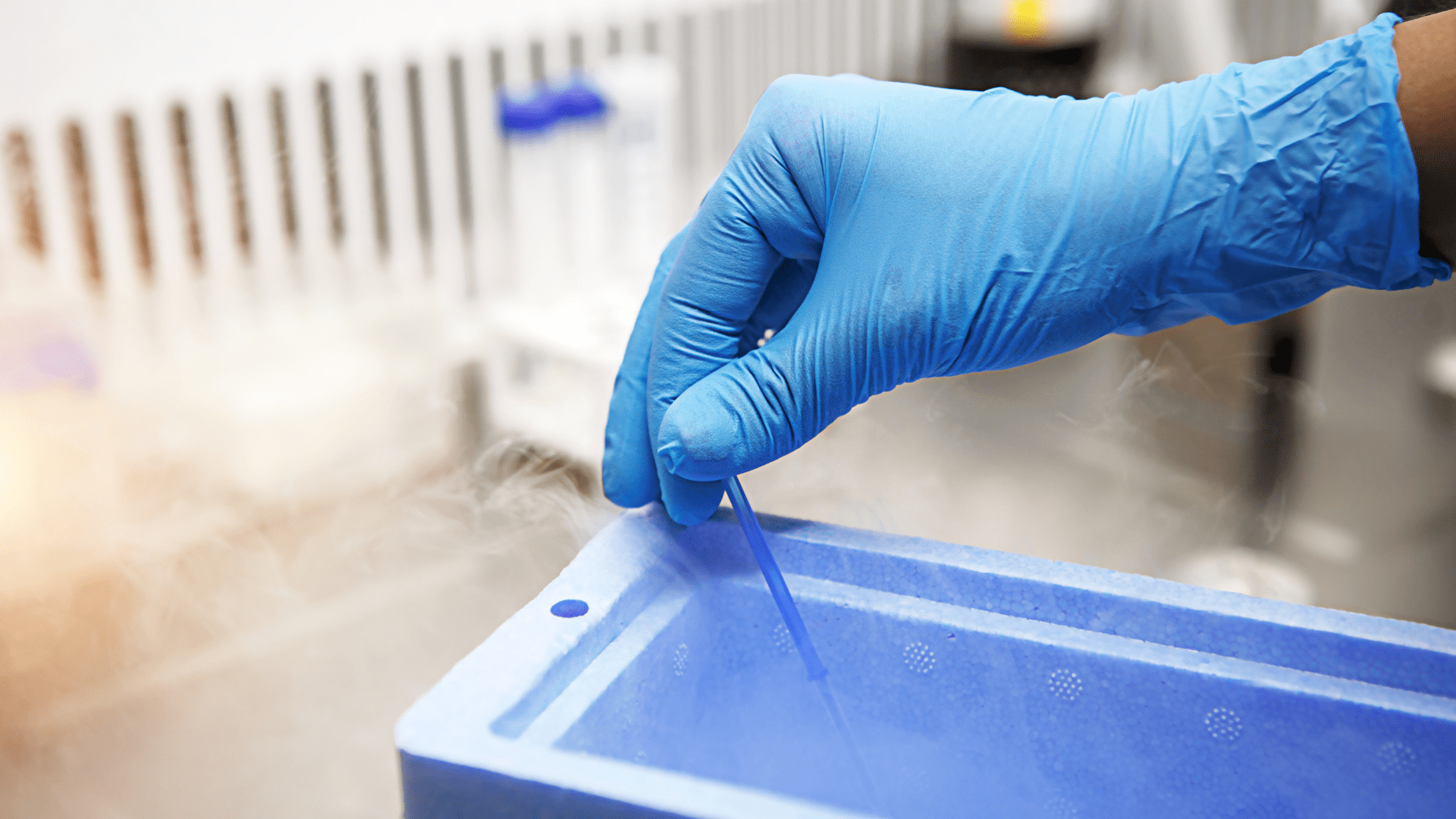Cryopreservation
Cryopreservation service
What is cryopreservation?
This service provides efficient freezing and storage of sperm and embryos from your mouse strain. This technique preserves genetic material by freezing it at extremely low temperatures, using liquid nitrogen to halt all biological activity and ensure long-term preservation of the cells. This process is essential for protecting valuable strains from genetic drift and reducing the need for continuous breeding, ultimately ensuring the continuity of research and breeding programs.

Why do I need this service?
Cost effective solution
It provides a secure, cost-effective solution for storing genetic resources when models are not actively in use. This service protects against unforeseen events such as facility failures, natural disasters, or disease outbreaks, ensuring that your valuable genetic material is preserved and readily available when needed. By utilising cryopreservation, you can reduce the costs associated with maintaining live colonies, optimising your laboratory’s budget and resources.
Safeguard your research
Safeguard the integrity of your research by limiting genetic drift and maintaining phenotype stability over time. Cryopreservation ensures that your genetic lines remain consistent and reliable, reducing the variability that can arise from prolonged breeding. It also enables the easy recovery of pathogen-free mice without the need for lengthy quarantine periods, facilitating quicker and safer reintroduction into your research projects. Additionally, it promotes strain sharing within the scientific community, allowing researchers to collaborate more effectively and advance scientific knowledge through the exchange of high-quality, pathogen-free genetic material.
How does it work?
Cryopreservation preserves biological materials by cooling them to very low temperatures using liquid nitrogen. This process effectively halts all biological activity, including the biochemical reactions that lead to cell death and DNA degradation. The genetic material is stored at Ozgene in a secure, temperature-controlled liquid nitrogen tank. Materials can be sent to the customer as required or used at Ozgene to revive the strain.

Embryo cryopreservation
We cryopreserve up to 200 embryos and test the viability of live offspring.
Sperm cryopreservation
We cryopreserve sperm from two male donors into multiple vials/straws.
How does it work?
Cryopreservation preserves biological materials by cooling them to very low temperatures using liquid nitrogen. This process effectively halts all biological activity, including the biochemical reactions that lead to cell death and DNA degradation. The genetic material is stored at Ozgene in a secure, temperature-controlled liquid nitrogen tank. Materials can be sent to the customer as required or used at Ozgene to revive the strain.

Embryo cryopreservation
We cryopreserve up to 200 embryos and test the viability of live offspring.
Sperm cryopreservation
We cryopreserve sperm from two male donors into multiple vials/straws.
Why Ozgene recommends cryopreservation?
It enables you to conserve resources when you are not actively using a mouse model. It ensures your valuable strains are protected from unfortunate events, including natural disasters, facility failures, disease outbreaks, breeding cessation and genetic drift. The service also enables efficient management of laboratory space and resources, reducing the costs associated with maintaining live colonies.
Embryo cryopreservation:
Purpose
Advantages
- Preserves the entire genetic makeup of the mouse model, including both maternal and paternal contributions.
- Allows for the generation of live mice from the thawed embryos, maintaining the potential for immediate experimentation.
- Suitable for preserving unique genetic combinations or complex traits derived from specific breeding strategies.
- Most suitable for homozygous lines and modifications on multiple alleles.
Sperm cryopreservation:
Purpose
Advantages
- Provides a cost-effective and space-saving method for long-term storage compared to embryos.
- Enables indefinite storage of genetic material, allowing researchers to maintain valuable strains over extended periods.
- Facilitates rapid and efficient colony generation through in vitro fertilization (IVF) when needed.
- Most suitable for heterozygous lines and single allele modifications.
Choosing the right service
In summary, embryo cryopreservation preserves the entire genetic composition and allows for the generation of live mice, while sperm cryopreservation offers a cost-effective and efficient means of long-term storage with flexibility in generating mouse models through IVF. The choice between the two methods depends on research needs, breeding strategies, and resource considerations.

Frequently asked questions
What is the primary purpose of cryopreservation?
How long can genetic material be stored?
Can cryopreserved material be revived and used in research at a later date?
What precautions are taken to ensure the safety of cryopreserved material?
How is cryopreserved material stored?
What materials can be cryopreserved?
Cryopreservation publications
Takahashi, H and Liu, C. Archiving and distributing mouse lines by sperm cryopreservation, IVF, and embryo transfer. Methods Enzymol. 2010:476:53-69. doi: 10.1016/S0076-6879(10)76004-3.
Taft R. Mouse embryo cryopreservation by slow freezing. Cold Spring Harb Protoc. 2018 May 1;2018(5). doi: 10.1101/pdb.prot094540.
Get in touch
We offer personalised services for your research needs. Request a free quote today.
Please fill out the form and we will respond to your query within two business days. Alternatively, visit our contact page for more ways that you can get in touch with us.

